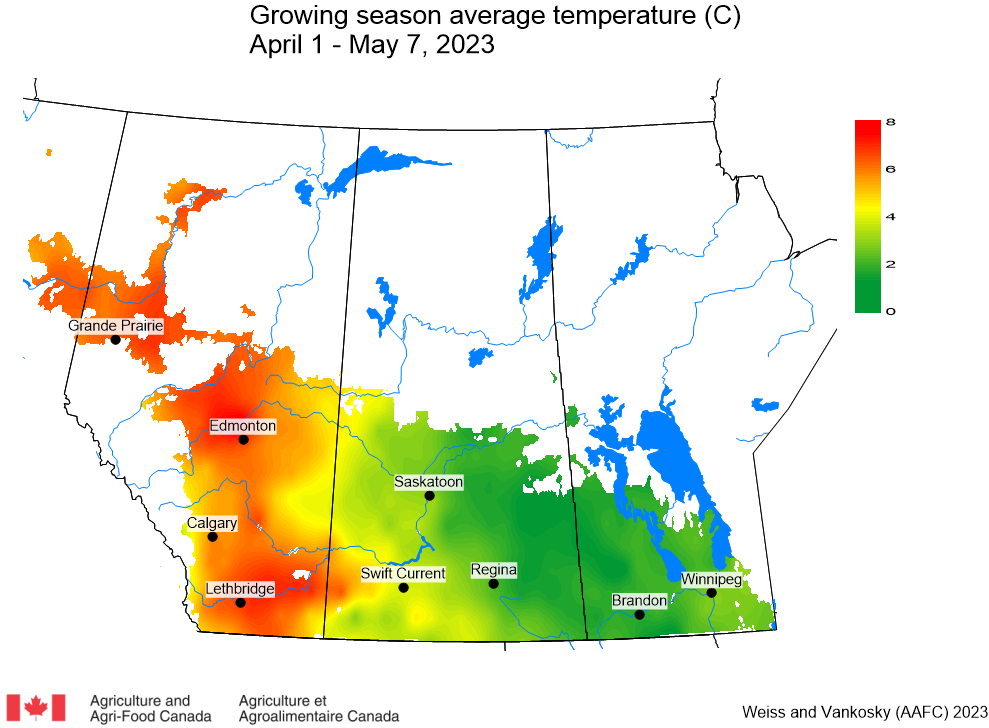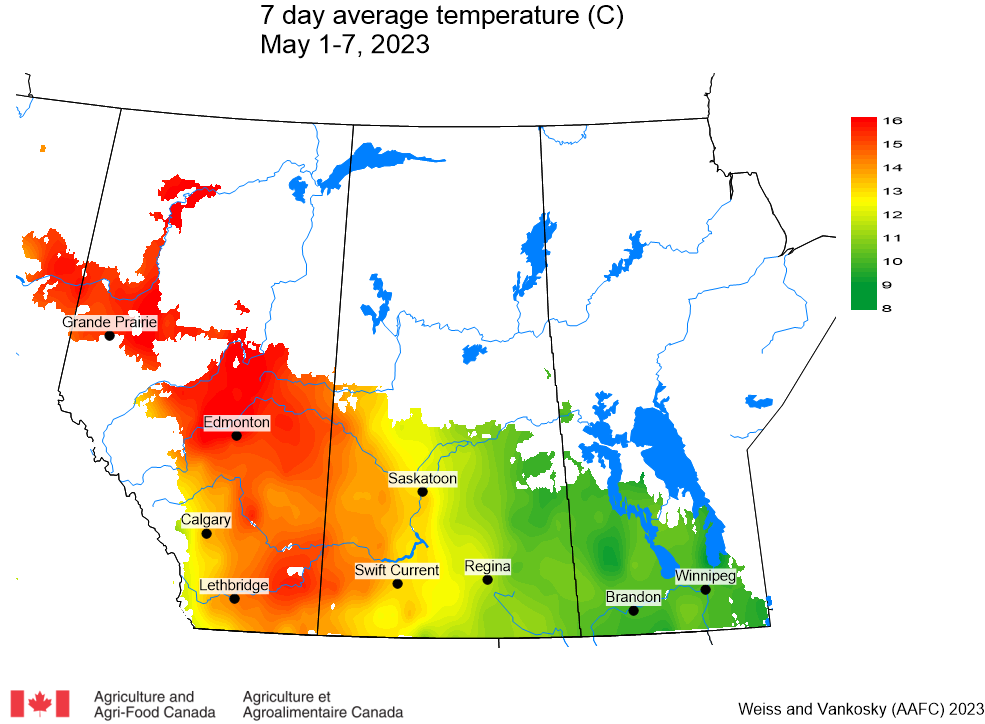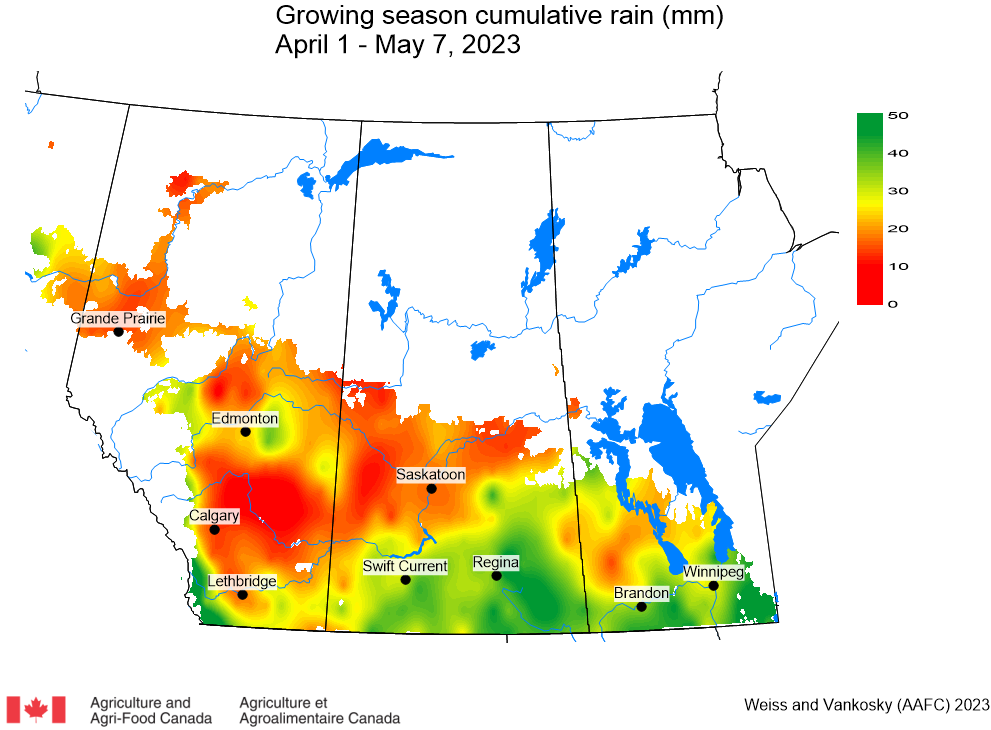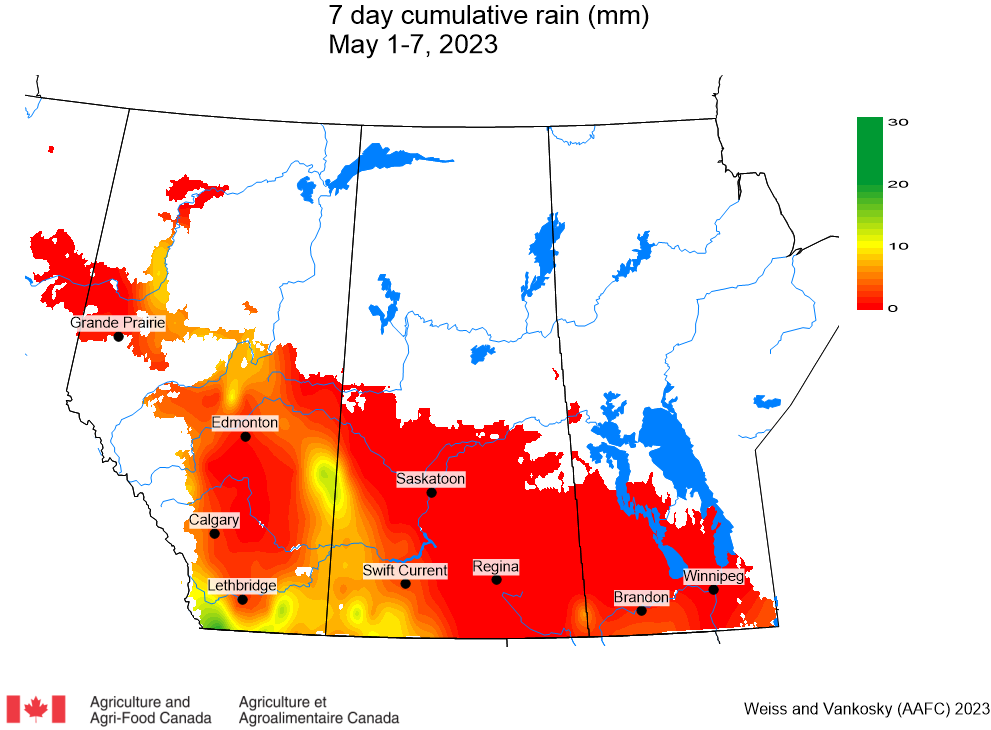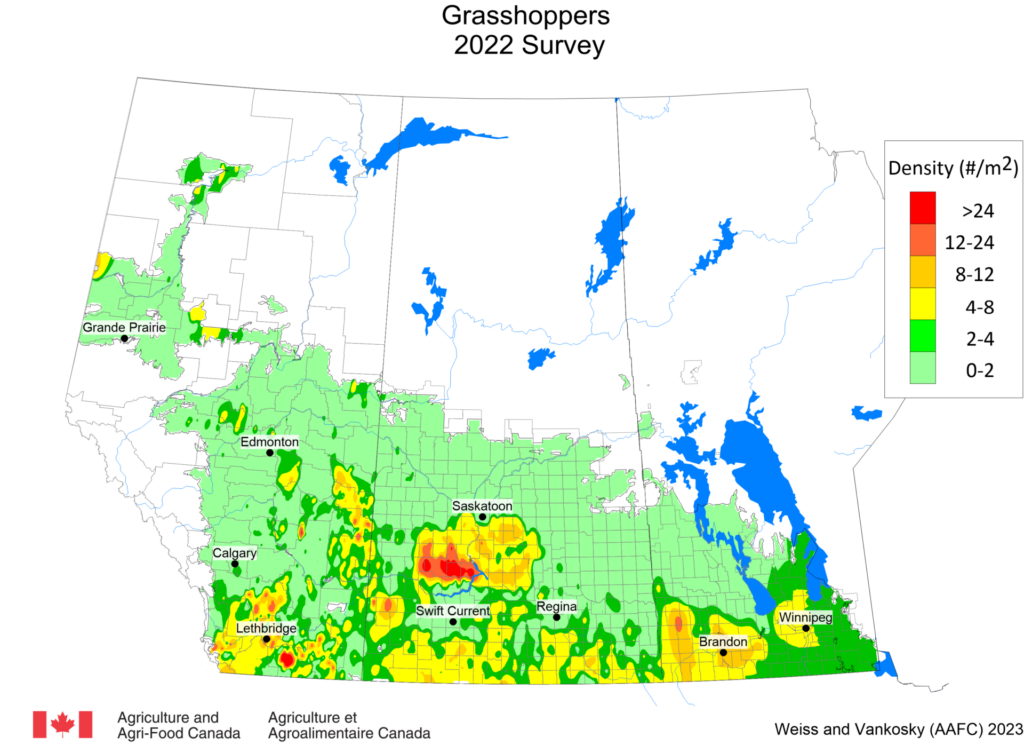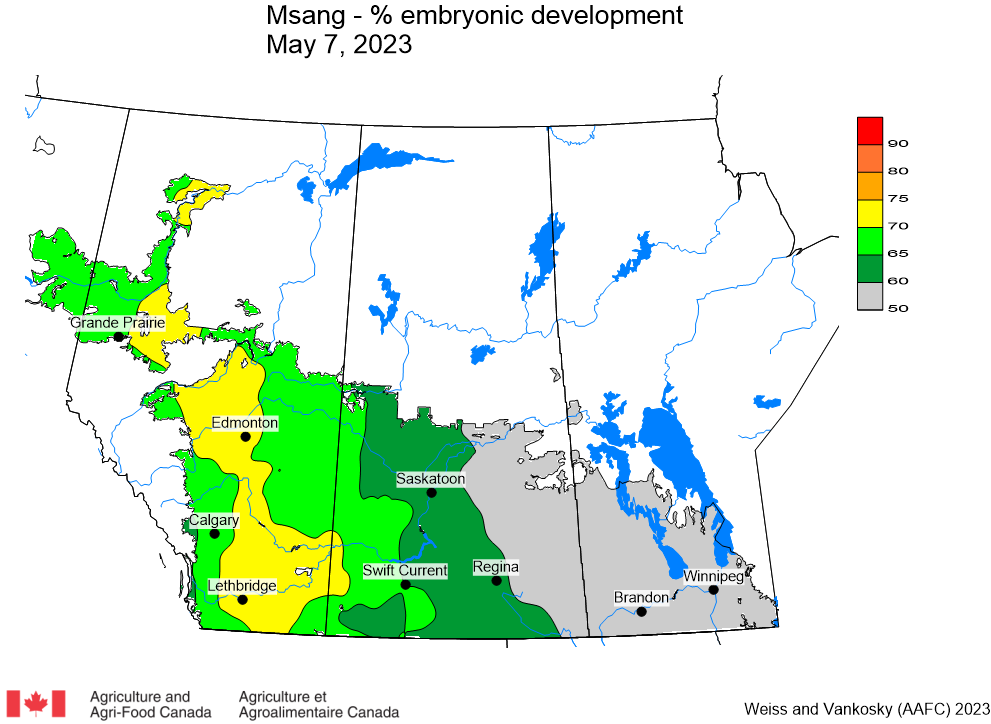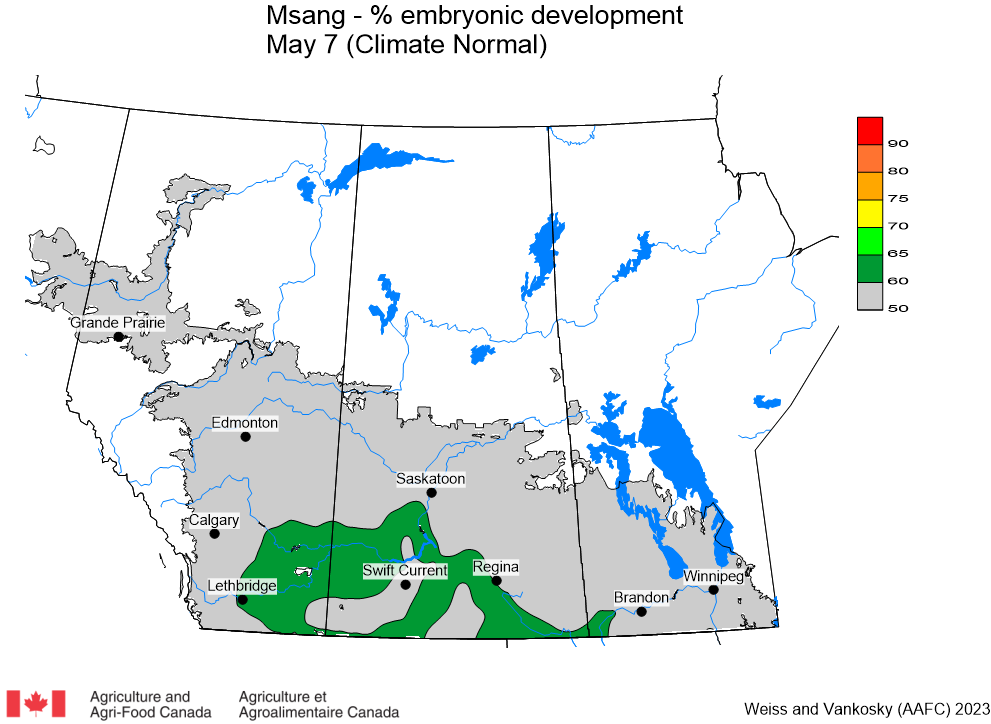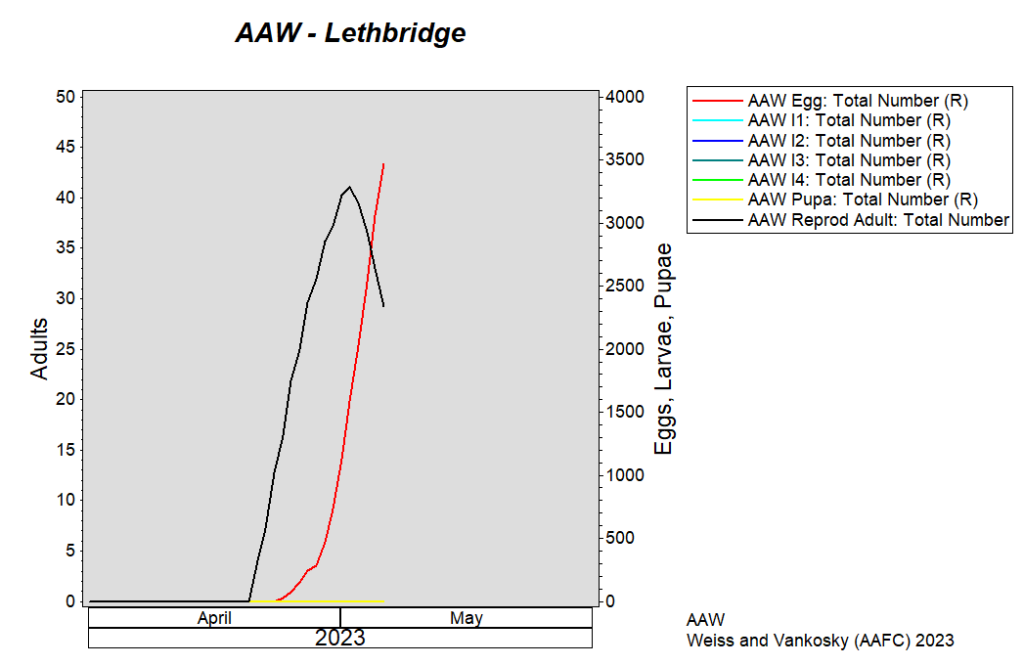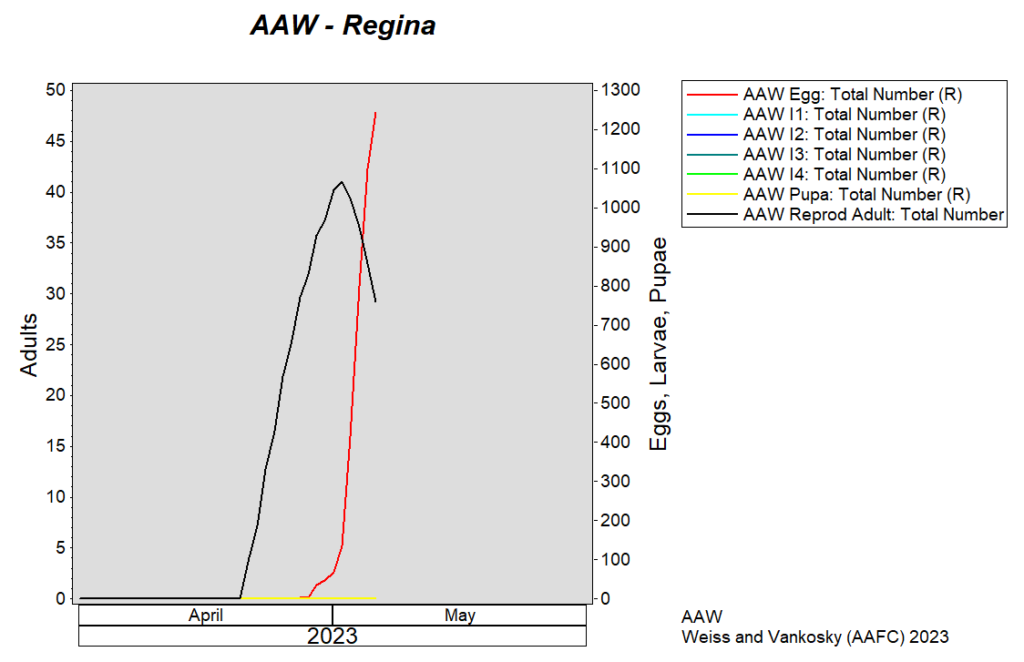Welcome to the first Weekly Update for the 2023 growing Season!
As planting and insect scouting are just getting started, this Weekly Update focuses on two important insects to watch out for early in the season, grasshoppers and alfalfa weevil. The first Insect of the Week (which unfortunately did not get emailed out earlier this week) is a timely reminder to watch out for flea beetles.
The prairie-wide maps summarizing the results from the 2022 growing season are online and available for review, as are the historical insect pest distribution maps. These prairie-wide geospatial maps offer insight into potential risk and help growers prioritize their scouting lists.
Remember, insect Monitoring Protocols containing helpful insect pest biology, how and when to target in-field scouting, and even thresholds to help support in-field management decisions are all available for review or download.
Wishing everyone good weather and let the insect scouting begin!
To receive free Weekly Updates automatically, please subscribe to the website!
Questions or problems accessing the contents of this Weekly Update? Please contact Dr. Meghan Vankosky (meghan.vankosky@agr.gc.ca) to get connected to our information. Past “Weekly Updates” can be accessed on our Weekly Update page.

